Peplink is a large and respected company in the high-end mobile networking space, particularly well known for providing cellular connectivity for everything from fleets of vehicles to cruise ships to dispersed corporate offices.
This Gear Center entry covers Peplink's most affordable Pepwave MAX "mini" routers, as well as other low-performance, low-cost routers such as the BR2. The "mini" routers used come in two major flavors, the Max Transit Mini (now retired) and the Max BR1 Mini.
The MAX BR1 Mini is ostensibly the little brother of the MAX BR1 (our review), but the similarity only extends to the name.
In general, the Mini routers are smaller, less expensive, and less capable. But they also cost a lot less, which makes them a potentially good value.
Similarly, the MAX BR2 seems at first glance to be the little brother of the MAX BR2 Pro (our review), but it's more like an infant with low-performance hardware and only Cat-4 modems.
Differences from Non-Mini Versions
Here are the essential differences from the Mini's big brothers, the MAX BR1 and MAX Transit:
- The Minis are physically smaller.
- By default, the Minis can only use cellular as an upstream WAN connection. WiFi-as-WAN, Ethernet WAN, and failover features are disabled in the Minis - but these features can be unlocked with an extra fee:
- A one-time $99 Feature Pack Purchase
- Active Primecare subscription ($49/year) - one free year of PrimeCare is included with the router purchase.
- The Ethernet ports on some models are only Fast Ethernet (100Mbps).
- Some Minis only come with single-band 802.11n 2.4GHz Wi-Fi, and the Wi-Fi radio is less powerful.
- The Mini routers have slower internal components with less peak throughput.
Generally, the Mini routers are less capable and have fewer features, but they also cost less.
Product Specifications
The Peplink MAX BR1 Mini HW3 is a redesigned and upgraded version of the previous BR1 Mini HW2 model. WiFi-as-WAN, Ethernet WAN, and some other features are disabled, but you can purchase a "feature pack" to unlock these features, or they also come with an active PrimeCare subscription.
It is available with a Cat-4, Cat-6, or Cat-7 cellular modem.
We recommend the Cat-7 version for maximum performance and carrier support.
Additionally, there is a 5G version, the MAX BR1 Mini 5G, with an X62 modem, but this model does NOT have Wi-Fi. Otherwise, it has the same chassis and limitations as the HW3 LTE models but with a much more capable 5G cellular modem.
This model is also recommended if you have another router or device to provide a Wi-Fi LAN.
The MAX BR2 is a basic Cat-4 or Cat-7 LTE dual modem router with USB WAN support, 4x LAN and 1x WAN Gigabit Ethernet ports, and multiple power options, including POE-in. The Cat-4 was Released in July 2024, and this model is designed primarily for industrial and IoT applications and features older internals with only a 300Mbps throughput and Wi-Fi 5. The Cat-7 was released in November, 2024 for the most entry level router for home users and reliable remote and mobile applications.
MAX BR1 Mini 5G
Released in January 2024 with an x62-based modem. A model with Wi-Fi was introduced in early 2025.
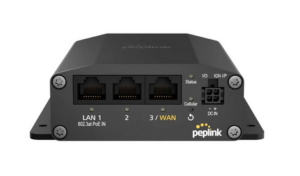
Specifications
- Model:
- MAX-BR1-MINI-5GN-T-M-PRM
- MAX-BR1-MINI-5GN-T-PRM
- Router Specs:
- # of Connected Devices: 60
- Wi-Fi Router:
- MAX-BR1-MINI-5GN-T-M-PRM: None - No Wi-Fi
- MAX-BR1-MINI-5GN-T-PRM: Yes
- Wi-Fi Standard: Wi-Fi 5 (802.11ac) - Simultaneous Dual-Band (2.4GHz / 5GHz)
- Wi-Fi Antenna/Ports: 2x RP-SMA/Female Antenna Port
- Wi-Fi as WAN: Available for an additional fee or with Prime Care
- Guest Wi-Fi Network: Yes
- Default Control Panel Address:
- Address: 192.168.50.1
- Password: Not Specified
- USB Tethering Support: No
- Ethernet Ports: 3x Gigabit Ethernet - 1x LAN/WAN, 1xLAN and 1xLAN with PoE, 1x vWAN with PrimeCare
- Router Throughput: 300 Mbps / 20 Mbps Encrypted
- Cellular Modem Specs:
- Cellular Modem: Single 5G
- Modem Module or Chipset: Qualcomm Snapdragon X62 (Quectel RM520N)
- Supported Networks and Bands: Verizon, AT&T, T-Mobile, Dish (Auto Switching)
- 5G Bands: x62: n1, n2, n3, n5, n7, n8, n12, n13, n14, n18, n20, n25, n26, n28, n29, n30, n38, n40, n41, n48, n66, n70, n71, n75, n76, n77, n78, n79
- LTE Bands: x62: 1, 2, 3, 4, 5, 7, 8, 12, 13, 14, 17, 18, 19, 20, 25, 26, 28, 29, 30, 32, 34, 38, 39, 40, 41, 42, 46, 48, 66, 71
- 4G/3G: HSPA+ 850/1900/2100MHz
- Carrier Certification: Verizon, AT&T, T-Mobile
- MIMO Support: 4x4
- 5G Cellular Performance:
- Max Theoretical 5G Performance: x62: 3.4 Gbps Down / 900 Mbps Up
- 5G Carrier Aggregation: Mid-Band & Low-Band 5G can be combined
- LTE Performance:
- LTE Performance Category: Cat-20 (Max Theoretical Speed: 2 Gbps Down / 150 Mbps Up)
- LTE Carrier Aggregation: At least 5x Download, 3x Upload
- Cellular Antennas/Ports: 4x SMA/Female Antenna Ports, Basic Indoor Antennas Included
- SIM Slots: 2 Nano
- Dimensions: 5.0 x 4.2 x 1.4 inches
- Other Ports: GPIO
- Power Source: 10v – 30v DC or PoE
- Outdoor Rated: No
- Special Features: Data Usage Tracking, Auto Failover, Integrated GPS, Band Locking, Load Balancing, SpeedFusion Bonding, Synergy, vWAN
- Retail Price:
- MAX-BR1-MINI-5GN-T-M-PRM - $499.00
- MAX-BR1-MINI-5GN-T-PRM - $549.900
- PrimeCare: First year free, then $49/yr
MAX BR1 Mini HW3 (LTE Version)
Specifications
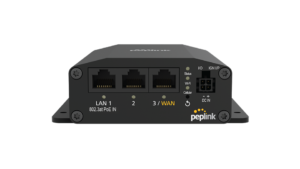
- Model: MAX BR1 Mini HW3
- Router Specs:
- # of Connected Devices: 60
- Wi-Fi Router: Yes
- Wi-Fi Standard: Wi-Fi 5 (802.11ac) - Simultaneous Dual-Band (2.4GHz / 5GHz)
- Wi-Fi Antenna/Ports: 2x RP-SMA/Female Antenna Port
- Wi-Fi as WAN: Available for an additional fee or with Prime Care
- Guest Wi-Fi Network: Yes
- Default Control Panel Address and Password:
- Address: Not Specified
- Password: Not Specified
- USB Tethering Support: No
- Ethernet Ports: 3x Gigabit Ethernet - 1x LAN/WAN, 1xLAN and 1xLAN with PoE, 1x vWAN with PrimeCare
- Router Throughput: 300 Mbps / 20 Mbps Encrypted
- Cellular Modem Specs:
- Cellular Modem: Single 4G
- Modem Module or Chipset: Not Specified
- Supported Networks and Bands: Verizon, AT&T, T-Mobile
- LTE Bands:
- Cat-4 Model: 2, 4, 5, 12/17, 13, 14, 66, 71
- Cat-6 Model: 1, 2, 3, 4, 5, 7, 8, 12/17, 13, 20, 25, 26, 29, 30, 41
- Cat-7 Model: 2, 4, 5, 7, 12/17, 13, 14, 25, 26, 41, 42, 43, 48, 66, 71
- 4G/3G Bands:
- Cat-4: HSPA+: Bands 2, 5
- Cat-6 Version: WCDMA/HSPA+/DC-HSPA+: Bands 1, 5, 8
- Cat-7 Version: HSPA+: Bands 2, 4, 5
- Carrier Certification: Verizon, AT&T, T-Mobile
- MIMO Support: 2x2
- LTE Performance:
- LTE Performance Category:
- Cat-4 (Max Theoretical Speed: 150Mbps Down / 50Mbps Up)
- Cat-6 (Max Theoretical Speed: 300Mbps Down / 50Mbps Up)
- Cat-7 (Max Theoretical Speed: 300Mbps Down/ 150Mbps Up)
- LTE Carrier Aggregation: 2x Download (Cat-6 and Cat-7 models)
- LTE Performance Category:
- Cellular Antennas/Ports: 2x SMA/Female Antenna Ports
- SIM Slots: 2 Nano
- Dimensions: 5.0 x 4.2 x 1.4 inches
- Other Ports: GPIO
- Power Source: 10v – 30v DC or PoE
- Outdoor Rated: No
- Special Features: Data Usage Tracking, Auto Failover, Integrated GPS, Band Locking, Load Balancing, SpeedFusion Bonding, Synergy, vWAN
- Retail Price:
- $349.00 (Cat-4 MAX BR1 Mini LTEA, HW3)
- $449.00 (Cat-6 MAX BR1 Mini LTEA, HW3)
- $399.00 (Cat-7 MAX BR1 Mini LTEA, HW3) - recommended
- PrimeCare: First year free, then $49/yr
MAX BR2
Cat-4 modems released in July 2024.
Cat-7 modems released in November 2024.
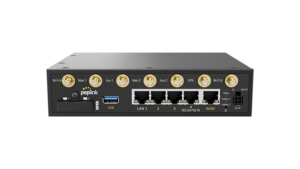
Specifications
- Model:
- Cat-4: MAX-BR2-LTE-US-T-PRM
- Cat-7: MAX-BR2-LTEA-US-T-PRM
- Router Specs:
- # of Connected Devices: 60
- Wi-Fi Router: Yes
- Wi-Fi Standard: Wi-Fi 5 (802.11ac) - Simultaneous Dual-Band (2.4GHz / 5GHz)
- Wi-Fi Antenna/Ports: 2x RP-SMA/Female Antenna Port
- Wi-Fi as WAN: Yes
- Guest Wi-Fi Network: Yes
- Default Control Panel Address and Password:
- Address: Not Specified
- Password: Not Specified
- USB Tethering Support: Yes
- Ethernet Ports: 5x Gigabit Ethernet - 1x WAN, 3xLAN and 1xLAN with PoE in, 1x vWAN with PrimeCare
- Router Throughput: 300 Mbps / 60Mbps Encrypted
- Cellular Modem Specs:
- Cellular Modem: Dual LTE
- Modem Module or Chipset:
- Cat-4 LTE (Quectel EC-25)
- Cat-7 LTE (Sierra Wireless EM7411)
- Supported Networks and Bands: Verizon, AT&T, T-Mobile
- 5G Bands: None
- LTE Bands:
- Cat-4 Model: 2, 4, 5, 12, 13, 14, 66, 71
- Cat-7 Model: 2, 4, 5, 7, 12/17, 13, 14, 25, 26, 41, 42, 43, 48, 66, 71
- 4G/3G: HSPA+ 850/1900/2100MHz
- Carrier Certification: AT&T, T-Mobile, Verizon
- MIMO Support: 2x2
- LTE Performance:
- LTE Performance Category:
- Cat-4 Model: (Max Theoretical Speed: 150 Mbps Down / 50 Mbps Up)
- Cat-7 Model: (Max Theoretical Speed: 300Mbps Down/ 150Mbps Up)
- LTE Carrier Aggregation:
- Cat-4 Model: None
- Cat-7 Model: 2x Download
- LTE Performance Category:
- Cellular Antennas/Ports: 4x SMA/Female Antenna Ports (2 per modem), Basic Indoor Antennas Included
- SIM Slots: 4 Nano (2 per modem)
- Dimensions: 6.89 x 5.12 x 1.61 inches
- Other Ports: None
- Power Source: 10v – 30v DC or PoE
- Outdoor Rated: No
- Special Features: Data Usage Tracking, Auto Failover, Integrated GPS, Band Locking, Load Balancing, SpeedFusion Bonding, Synergy, vWAN
- Retail Price:
- Cat-4 Model: $599.00
- Cat-7 Model: $699.00
- PrimeCare: First year free, then $99/yr
View our Peplink product line overview and articles - co-authored with our education & action partner at MobileMustHave (who offers advanced support, guidance and discounts to our members):
News, Videos & Status
We have had some brief hands-on time with a MAX BR1 Mini and MAX Transit Mini but have not focused on these entry-level devices as they are generally not very interesting to our core audience.
Related Video Overviews:
Related News Center Articles
Alternatives to Consider
For other popular mobile routers on the market we are tracking - here are our featured options:
This Review Contains Additional Member Exclusive Content!
We are Honored to be Member Funded! No ads, no sponsors, no selling (but may contain affiliate links)
Our members fund our in-depth independent reviews.
This entry may contain additional member exclusive content such as testing notes, field testing data, user interface tours, comparisons to alternatives, analysis, tips, videos and discounts.
Members also get interactive guidance, alerts, classroom and more.
Other Ways to Support Our Work At MIRC
Member Exclusive Content Below
- Thoughts & Analysis - Favorite Features & Potential Downsides
- Deep Dive
- Hardware Notes
- 5G Device
- Choosing Your Peplink
- Alternatives
- Retired Models
Purchasing Options
Purchasing Links & Disclaimer
We don't sell stuff, we are primarily member funded. Some links below may be affiliate links (see our disclaimer), which also helps fund MIRC.
The vendors displayed below provide larger discounts to our MIAs that we have negotiated instead of displaying affiliate links while they are logged in.
MIA Discounts - Learn & Save!
Our Mobile Internet Aficionados (MIA) get special discounts from the below vendors. Members please check for discount codes before ordering. With savings up to 11% off, you could save more than your membership cost!
Members - check the Member Discounts page for some potentially substantial savings on purchasing Pepwave routers.
Affiliate Vendor Links - Using these links helps support MIRC's mission (MIAs, please log in to get special discounts):
- MobileMustHave:
- MAX BR1 Mini 5G
- MAX BR1 Mini 5G with Wi-Fi
- MAX BR1 Mini (HW3) Cat 7 | Full Timer 5G Internet Bundle
- MobileMustHave Internet Bundles (discounted kits with antenna & other options / member discounts stack - learn more)
- MAX BR2 (Dual Cat 4)
- MAX BR2 (Dual Cat 7)
- TechnoRV:
- Onboard Wireless: MAX BR1 Mini 5G
- Amazon: MAX BR1 MINI Cat 7
Other Vendors (non-affiliate):
- 5G Store:
WARNING: Peplink doesn't tend to give their products new model numbers when they refresh them; they also tend to keep older models around for a while. Make sure you know what you are getting by checking specs carefully, and don't end up with a device incompatible with your preferred networks or lacking capabilities!
Routers can serve as a central conductor of your local area network in your RV and boat. Mobile routers are different from residential routers in that they typically support multiple internet sources like cellular and Wi-Fi, can be powered off of 12v or AC and support external antenna for better receiving signal.
But you might not need a router in your setup. Here's a quick video overview the variety that routers come in:
For more on learning about mobile routers and how they might fit in your setup, follow up with our educational resources:
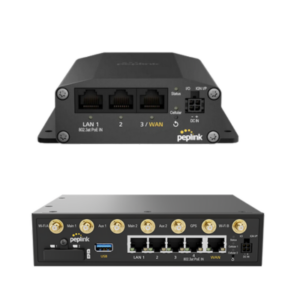

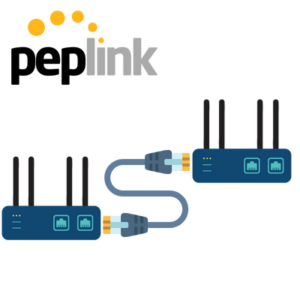

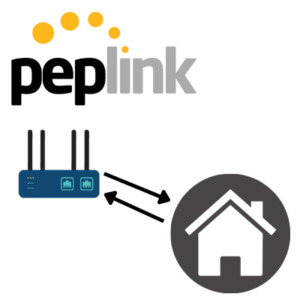
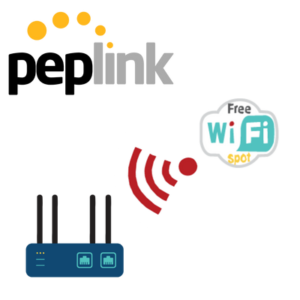


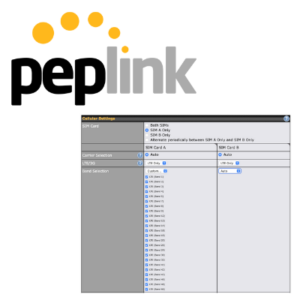





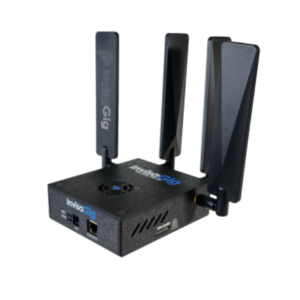
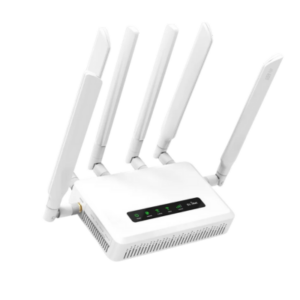
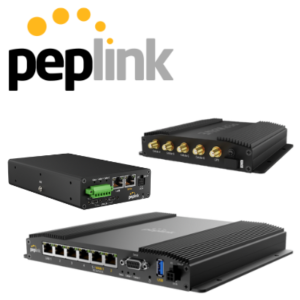
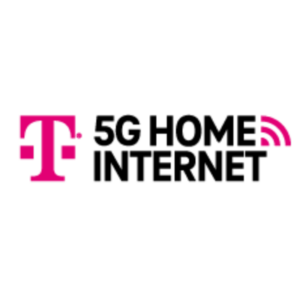
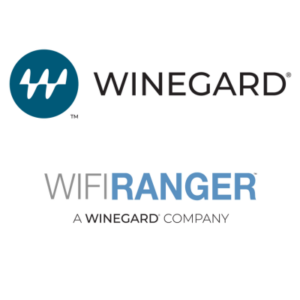
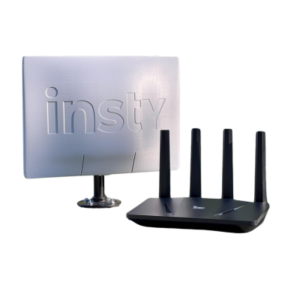
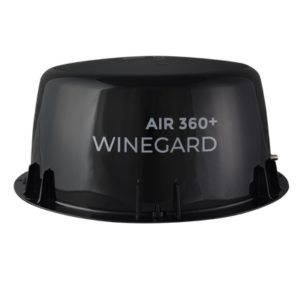

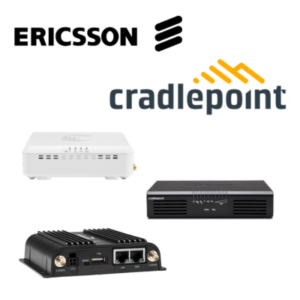



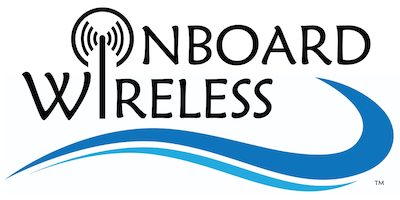







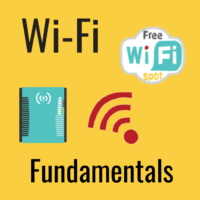
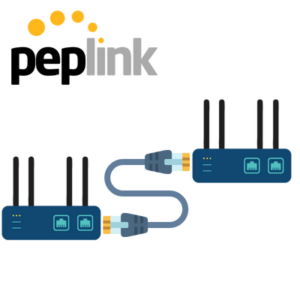

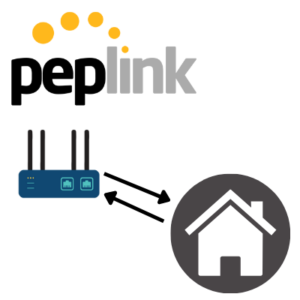
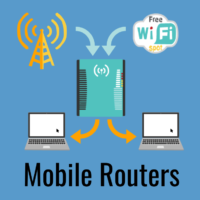

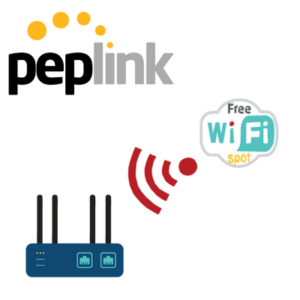


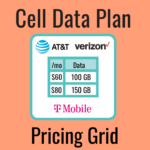

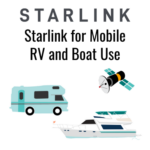
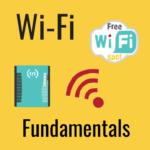
 Mobile Internet Resource Center (dba Two Steps Beyond LLC) is founded by Chris & Cherie of
Mobile Internet Resource Center (dba Two Steps Beyond LLC) is founded by Chris & Cherie of